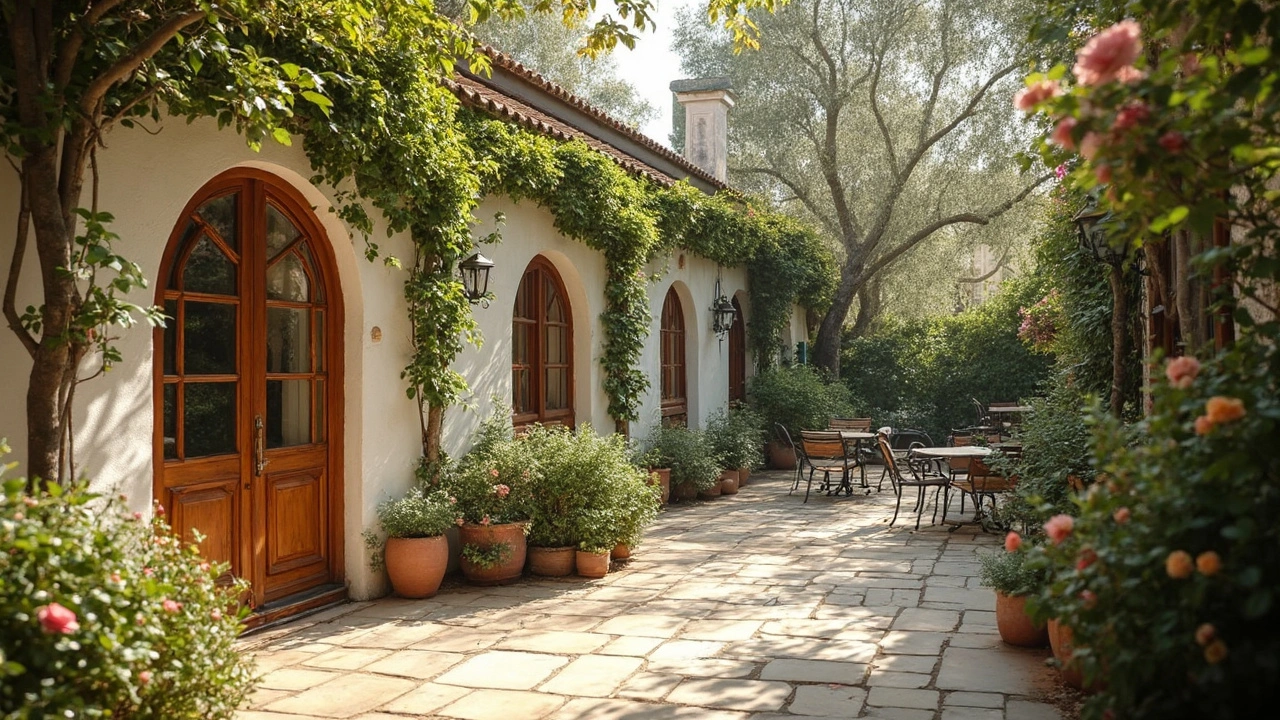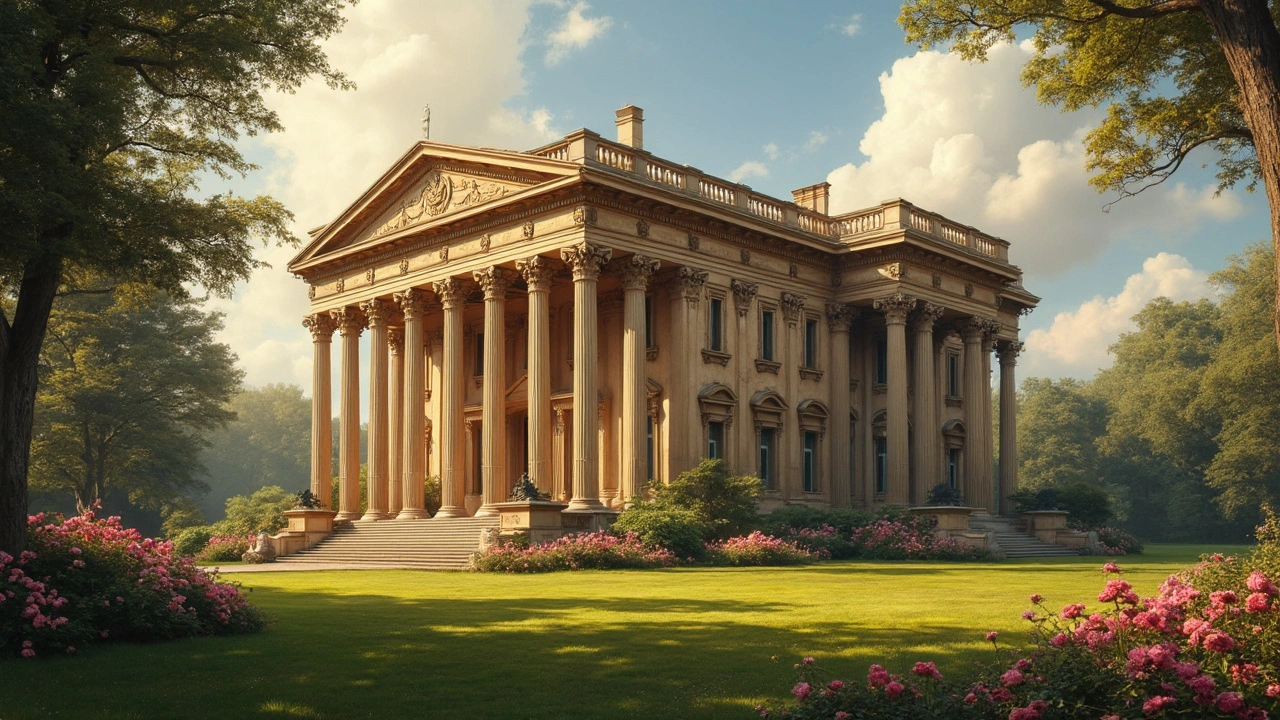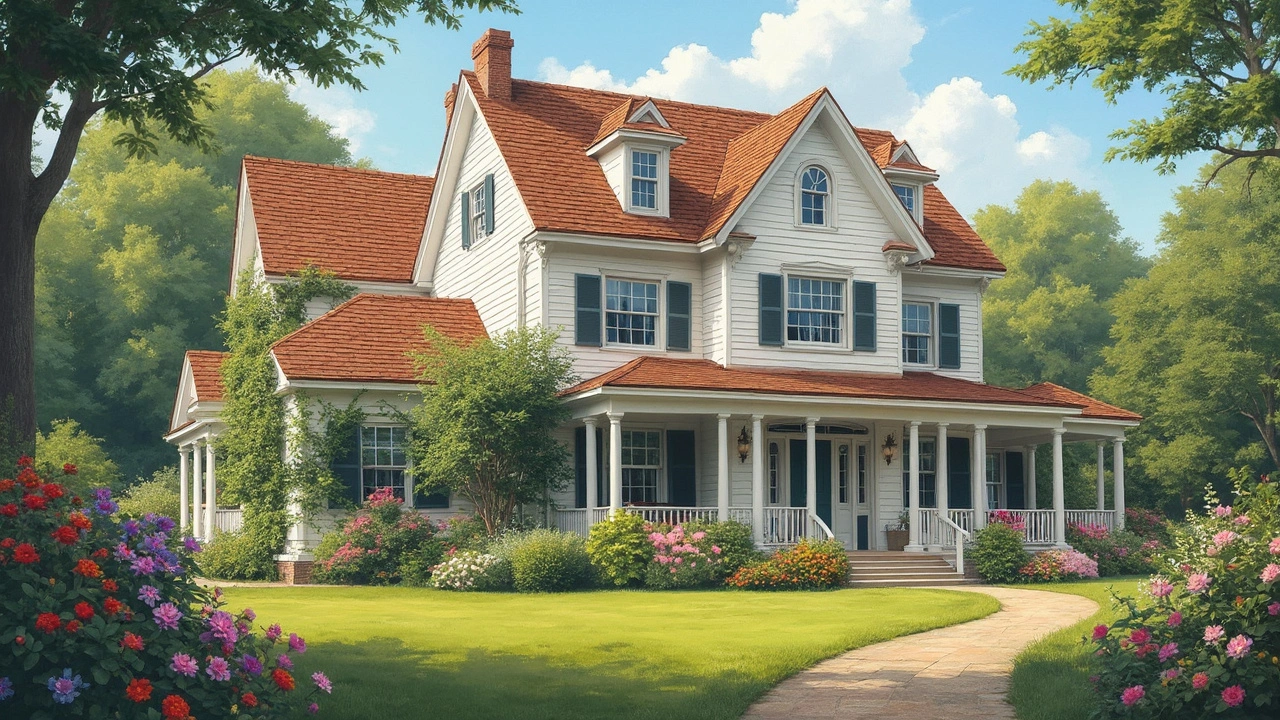Explore the exciting movement of neo-futurism in art and architecture, its unique vision, iconic examples, and how you can spot and harness future-forward creativity in daily life.
Architecture: Spot Styles, Learn History, Use Design
Buildings are living history you can touch. This page helps you read architecture fast—identify styles, understand what they mean, and use those ideas in real homes or walks around town. No jargon, just clear tips you can use the next time you pass a courthouse, house, or skyline.
Our tag collects classic and modern movements: Colonial (local materials and mixed traditions), Renaissance and Renaissance Revival (symmetry, domes, classical orders), Greek Revival (columns and pediments), Beaux-Arts (grand scale, ornament), Roman (arches and concrete innovation), Constructivist (geometric, political), High-Tech (exposed structure, glass and steel), Neo-Futurism (dynamic forms), Bauhaus (function-first minimalism), Mid-Century Modern (clean lines, indoor-outdoor flow), and more. Each style leaves clear marks—once you know them, you’ll notice a building’s story at a glance.
How to read a building
Start with five quick checks: date, shape, materials, details, and context. Look for a date plaque or ask a docent; that gives your first clue. Note the silhouette: domes, steep roofs, or boxy skylines tell a lot. Check materials—brick, stone, cast concrete, or curtain glass point to different eras. Study details like columns, cornices, window shapes, and ornament. Finally, think about context: civic monuments often use Beaux-Arts, churches may show Gothic or Renaissance lines, and factories converted to lofts often bear High-Tech or industrial marks.
Use this short checklist while walking: spot the roofline, count the window types, look for repeating motifs (like garlands or geometric panels), and note if structure is hidden or celebrated. Take one photo and one sketch; both train your eye faster than reading long descriptions.
Using historic styles in modern homes
You don’t need a full makeover to borrow a style. Pick one clear element: a sash window from Georgian houses, clay tiles and arches from Mediterranean Revival, or a simple column motif from Greek Revival. Mix that element with clean modern finishes—think a traditional cornice over minimalist cabinets. For larger work, match materials and scale: small ornate details get lost on big new facades, and oversized classical columns can overwhelm a small house.
When working on an older or protected building, check local preservation rules before changing key features. Simple repairs that keep original materials often add more value than trendy replacements. For new builds inspired by history, use modern methods to improve comfort and energy use while keeping the look you want.
Want to learn faster? Walk a few city blocks with a purpose: pick one style to find and make a short list of buildings that show it. Read focused posts on this tag to deepen what you see—Architectural Artistry Chambers gathers clear guides and examples across eras. Keep your curiosity sharp and your camera ready; architecture rewards close looking.
Explore why Beaux-Arts architecture refuses to fade away, from its bold style to its surprising modern influences. This article breaks down what makes Beaux-Arts stand out, offers tips to spot it in your city, and reveals how its design ideas are still shaping buildings today. Whether you're a curious city-walker, a design lover, or just want to spruce up your own space, you'll find practical info and cool facts here. Get ready to see your surroundings in a whole new light. No fluff, just what you need to know.
Mediterranean Revival architecture is more than just a pretty facade—it’s a style packed with personality and practical ideas for today’s homes. This article digs into why this timeless look keeps winning hearts, unpacks the roots of its design, and shows how you can work it into modern spaces. Packed with fun facts and down-to-earth tips, it’ll help you see why arched windows, clay tiles, and sun-drenched patios still turn heads. Whether you’re itching to renovate or just dreaming, get ready to find inspiration in the details. Explore the culture, the craft, and the clever ways this style stays fresh.
Bauhaus style shook up the world of design, giving us a new way of looking at furniture, homes, and even the cities we live in. This article explains what made the Bauhaus approach so different and powerful, how it spread far beyond its original school, and why its influence is still everywhere—from the chair you might be sitting in, to the apps you use. Expect to find clear examples, helpful tips for spotting Bauhaus touches in daily life, and a look at why this style feels so fresh today. If you've ever wondered why so much modern design looks the way it does, you're about to find out.
This article unpacks the American Craftsman home style—what sets it apart, why people love it, and how you can spot one from a mile away. We’ll dig into its origins, signature features, and real-world tips for adding Craftsman charm to your home. Expect clear advice, interesting facts, and practical insights to help you appreciate and maybe even own a true Craftsman house. Dive into the heart of American home design in a way that’s easy to understand.
International Style, a defining architectural movement, emerged in the 1920s as a response to the ornate designs of previous eras, emphasizing function, simplicity, and open spaces. Known for its clean lines and minimalistic approach, it revolutionized modern architecture and influenced how buildings are designed globally. An exploration into the history of this movement unveils the key figures, including Le Corbusier and Ludwig Mies van der Rohe, who shaped its aesthetic. This article delves into its core principles, influential works, and provides practical tips for incorporating its design elements into contemporary spaces.
Greek Revival Architecture is a style that draws inspiration from the classical architecture of ancient Greece. Popular in the 19th century, it features elements like tall columns, painted friezes, and symmetrical shapes. This architectural style is not only visually striking but also embodies a rich historical narrative. Greek Revival buildings can be found in many regions, notably in the United States, where they reflect the aspirations and cultural values of the time.
The International Style revolutionized architecture and art with its emphasis on functionalism and minimalism, greatly influencing modern urban landscapes. Merging simplicity and practicality, this style left a lasting impression, shaping how buildings are designed worldwide. By prioritizing open spaces and sleek lines, the International Style impacted art and design, bridging cultures and fostering a global architectural language. Shell out this guide for an informed exploration of its key features and historical significance.
Explore the charm of Colonial Revival architecture, a timeless style that brings history to life. This article dives into its features, history, and impact, providing practical design tips along the way. Learn why this style captivates homeowners, architects, and history buffs alike. Discover how modern homes can integrate Colonial Revival elements for a classic touch. Get ready to appreciate a style that never goes out of fashion.
Colonial Revival Architecture is more than just a nod to the past; it stands strong today with its charismatic blend of history and functionality. From symmetrical facades to charming porches, this style offers timeless aesthetics paired with modern adaptability. Whether you're renovating an existing home or designing a new one, understanding the relevance of Colonial Revival can guide your architectural decisions. This article explores reasons behind its enduring appeal and how you can incorporate its elements into modern living spaces.










